Training Philosophy
Performance training goes beyond being bigger, faster, and stronger. It’s about increasing your efficiency and abilities with respect to the sport specific movement. Speed, strength, agility, and power are by products of a well-designed performance program.
Improving Your Position
 Prior to focusing on more targeted strength qualities, an athlete must ensure they are achieving optimal positions throughout their movement. This will allow the athlete to get into a loaded position and get out of that position in an explosive manner. The ability to load and explode is critical to a quick and efficient movement. If the athlete is not in the proper position to exert and absorb force, they will not be efficient and able to maximize their energy. We will review the athlete’s mobility, stability, and muscle activation to determine if the athlete is in the proper position and if necessary retrain the body to learn the optimal position. This will be achieved by:
Prior to focusing on more targeted strength qualities, an athlete must ensure they are achieving optimal positions throughout their movement. This will allow the athlete to get into a loaded position and get out of that position in an explosive manner. The ability to load and explode is critical to a quick and efficient movement. If the athlete is not in the proper position to exert and absorb force, they will not be efficient and able to maximize their energy. We will review the athlete’s mobility, stability, and muscle activation to determine if the athlete is in the proper position and if necessary retrain the body to learn the optimal position. This will be achieved by:
- Teach correct alignments such as hip-knee relationship, shin angles, and proper posture.
- Enhance the optimal body position. The body works like a rubber band, but muscles must be in optimal position to stretch or the rubber band effect will not be maximized.
- Progress toward sequencing to combine multiple motions.
- Learn how to move efficiently and safely.
Optimize Strength Qualities
 There are many variations of “strength” that the body can display. Strength goes beyond the traditional views of adding muscle mass or lifting greater weight. Those are just two of the ways that muscles can be trained, but the way the body moves is more complicated, especially as we teaching our body to be more efficient in its athletic movements. At F2P we focus on the specific strength qualities displayed on the field of play and in training such as sprinting, jumping, or change of direction. By observing these movements, we can isolate those specific strength qualities that will elevate your game. The Strength Qualities we analyze are:
There are many variations of “strength” that the body can display. Strength goes beyond the traditional views of adding muscle mass or lifting greater weight. Those are just two of the ways that muscles can be trained, but the way the body moves is more complicated, especially as we teaching our body to be more efficient in its athletic movements. At F2P we focus on the specific strength qualities displayed on the field of play and in training such as sprinting, jumping, or change of direction. By observing these movements, we can isolate those specific strength qualities that will elevate your game. The Strength Qualities we analyze are:
- Rate of Force Development (RFD) – How fast and with how much force can your muscles create movement without a stretch reflex
- Eccentric Ability – How well does your body work like a rubber band
- Yielding Strength – Stability strength, your ability to resist/absorb force
- Reactive Strength – A muscle’s ability to go from a stretching action to a shortening action (absorb and transfer force)
“Everything you do in training needs to answer the question: how is this going to help me on the field, court, or ice?”
– Nick Pinkelman, F2P Performance
– Nick Pinkelman, F2P Performance
Translation to the Field of Play
At F2P we train athletes who strive to be better in their sport and we ultimately measure success by your improvement on the field. In training we will test, analyze, measure, and push, but it is all with the intent to improve your play. Our goal is not to create a workout warrior, but to create a more athletic and stronger athlete that will succeed on the field of competition.
Year Round Training
If you’re training to be better during competition, you have to train year round. At F2P we believe in-season training is critical to enhance offseason gains and ensure all your hard work translates onto the field of competition. At the start of every in-season session we test and evaluate the athlete’s nervous system fatigue so that we can prescribe the optimal amount of intensity, volume, and recovery for the workout. The goal is always the same, to improve performance (not just maintain) and reduce the risk of injuries. Our in-season programs are vital for helping to reduce the risk of injury due to the overuse of movement patterns performed during the season.

